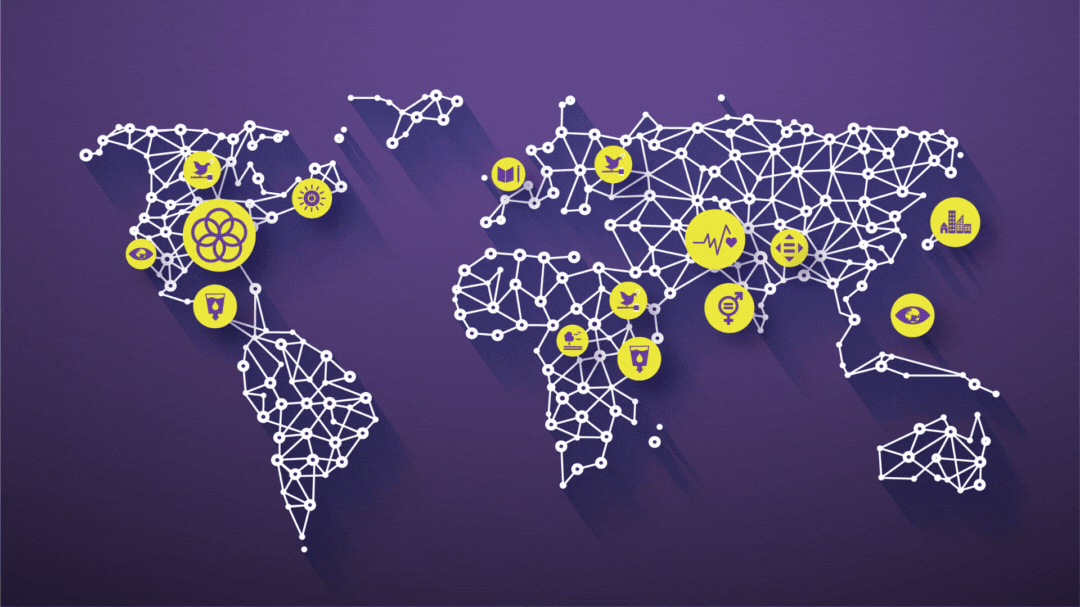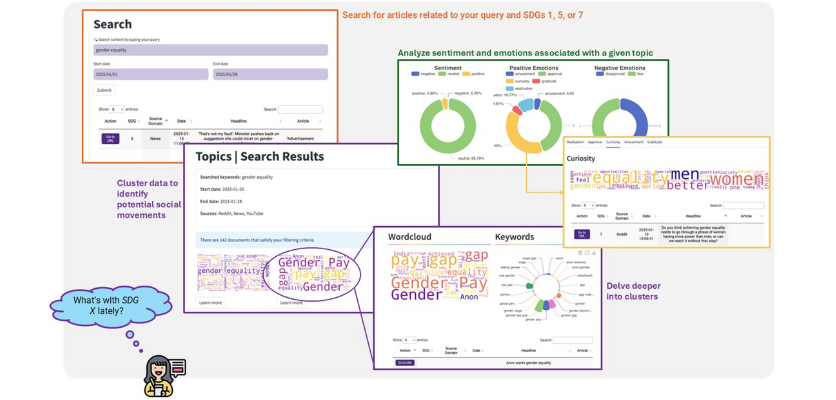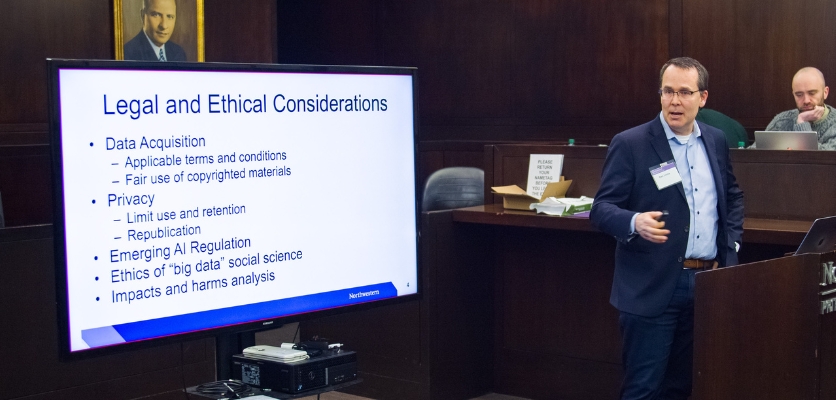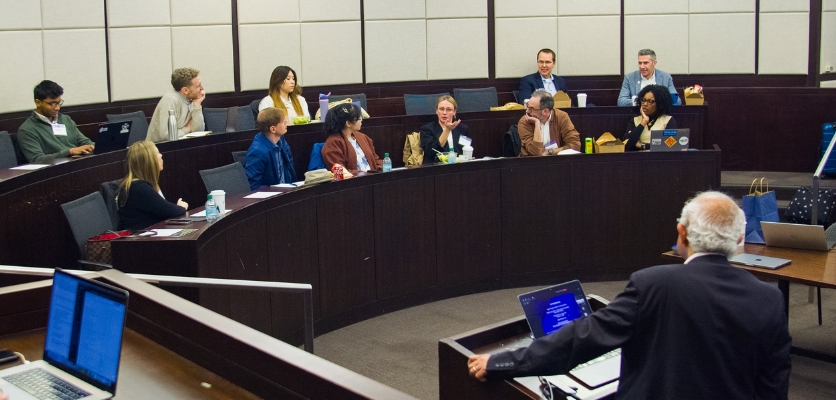Empowering Journalists to Decode Social Movements: The Buffett Global Working Group Behind New AI System
Jump to video >>
In today’s fast-moving world, social movements can emerge overnight and evolve in ways that shape politics, culture, and global affairs. For journalists tasked with reporting on these movements, making sense of scattered digital signals and complex narratives can be a daunting challenge.The Buffett Institute’s AI and Social Movements Global Working Group brings together experts from engineering, law, and the social sciences to understand how ethically to leverage AI in tracking social movements worldwide. This interdisciplinary team recently led the development of the Social Movement Analysis & Reasoning Tool (SMART), an AI system designed to help journalists understand worldwide social movements in real-time.
At the forefront of SMART’s development is Buffett Faculty Fellow VS Subrahmanian, Walter P. Murphy Professor of Computer Science at Northwestern University’s McCormick School of Engineering. “SMART tries to capture data about every social movement, regardless of whether it’s discussed on Reddit or mentioned in the news,” he explained. “The goal is to provide journalists with deep analytical insights on whether a movement has grown, changed in character, or is predicted to become more influential in the coming months.”
VS Subrahmanian overviews SMART at a March 2025 workshop for journalists.
The project’s inspiration lies in the United Nations’ Sustainable Development Goals (SDGs). “Many social movements are key drivers towards the achievement of these goals,” said Subrahmanian. “SMART is our response to the need to help these social movements thrive and flourish.” SMART harnesses data-driven insights to illuminate how grassroots efforts contribute to goals such as poverty reduction and access to clean water.
Sampling of SMART's dashboard options and capabilities
This ambitious vision rests on the working group’s multidisciplinary expertise. Subrahmanian explains: “We have faculty from communications, law, journalism, and computer science working together. Journalists help us understand the questions they need answered, lawyers ensure we respect privacy and legal standards around data use, communications experts analyze the types of messages we’re processing, and computer scientists build the AI algorithms that make it all work.”AI’s role in SMART is pivotal. “We use AI to determine whether a post or article relates to a particular Sustainable Development Goal and to analyze the sentiments expressed,” said Subrahmanian. “This reveals not only if support is growing but also whether emotions like fear, anticipation, or joy are associated with these movements—critical data points for forecasting their future.”
Bringing a vital perspective on related ethical and legal challenges is Daniel Linna, Senior Lecturer and Director of Law & Technology Initiatives at Northwestern University’s Pritzker School of Law. “The promise of AI in public data analysis is tremendous, but we must balance innovation with respect for privacy, fairness, and transparency,” he said.
For Linna, this balance is foundational. “We’re working to embed legal safeguards directly into the tool so journalists can trust that their reporting respects both the law and ethical norms. That way, SMART becomes a responsible partner in the public discourse.”
Daniel Linna discusses key legal and ethical considerations for SMART.
Offering his expertise on the intersection of technology and media, Jeremy Gilbert, Knight Professor in Digital Media Strategy at Northwestern University’s Medill School, sees SMART as a transformative asset. “In today’s digital age, where everyone can speak but few perspectives rise above the noise, SMART helps journalists surface the social movements that truly matter,” he says. “By tracking movements’ growth and sentiment, journalists can produce richer, more accurate stories that inform the public and hold power accountable.”Gilbert also stresses the importance of collaboration with journalists themselves. “We’ve run workshops with journalists to ensure SMART answers the real questions reporters face. Their feedback is essential in shaping a tool that is not just powerful but practical.”
Journalists and subject matter experts gather for a workshop at Northwestern's Pritzker School of Law to learn about SMART’s capabilities and offer feedback on the tool.
Looking ahead, the Buffett Institute's AI & Social Movements Global Working Group has clear goals for SMART. “We want to expand SMART’s multilingual capabilities and support analysis across all 17 Sustainable Development Goals,” Subrahmanian shares. “We’re also working to make the system more robust against misinformation—a growing threat to social understanding.”The Northwestern Security & AI Lab (NSAIL), led by Subrahmanian and jointly housed in the Buffett Institute for Global Affairs and McCormick School of Engineering, is at the forefront of combatting misinformation spread by deepfakes through its Global Online Deepfake Detection System (GODDS). “At NSAIL, we study how various malicious actors can leverage technology,” Subrahmanian adds. “With the goal of protecting society, we hope to one day use SMART to understand how these malicious actors can drive harmful social movements.”
SMART stands as a powerful example of how interdisciplinary innovation can illuminate the complexities of our social world and help journalists tell stories that shape our future. As Linna puts it, “When technology, law, communication, and journalism come together, we can build tools that not only inform but empower people to make better decisions and foster a more informed society.”
Watch our short video on SMART
Explore how the Buffett Institute’s Global Working Groups tackle urgent global challenges >>





